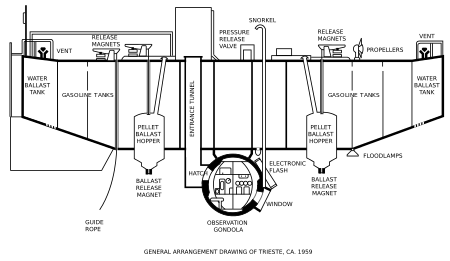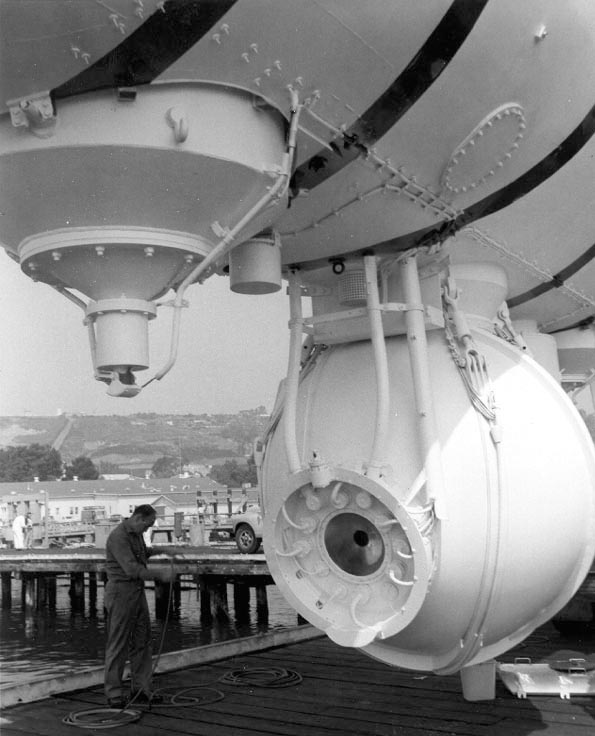The Trieste
In order to dive very deep, Auguste Piccard needed to build a new vessel because a normal submarine wouldn’t be able to handle the water pressure. The pressure at the bottom of Challenger Deep is about 15,000 pounds per square inch. That is like having 6 aircraft carriers on top of the vessel.
Piccard named his invention a “bathyscaphe. " It is like a balloon underwater, weighed down to the bottom, and when ready, would float back up. The vessel has two main parts, a metal tank for buoyancy while the crew stayed in the tight-spaced gondola.
A Diagram of the Trieste

The tank contained 85,000 liters of gasoline. Gasoline is hard to compress, so at such depths, it becomes lighter than water and the vessel can float back up. To sink down, Trieste used two tanks full of iron pellets. Once at the bottom and ready to rise back up, the crew releases those pellets and it floats back up.
The gondola has a thick steel wall with a small thick window for observation. It also had an independent breather system that helped keep the sphere full of oxygen. It was manufactured by Krupp Steel Works in Essen, Germany.
This bathyscaphe was named the Trieste after the Italian port city where it was assembled.
Piccard needed money for other projects, and on the other hand, the US navy was interested in deep sea exploration, so the navy bought the Trieste in 1958 for $250,000. That is how Don Walsh was added to the crew.
Before the dive, the Trieste was first tested in the Mediterranean, and then off the coast of California, and finally at Guam.
The sphere where the crew stayed during the dive

After Challenger Deep, the Trieste was used for one more dive for the search of the sunken submarine USS Thresher. Now, it is housed at the US Navy Museum in Washington DC.